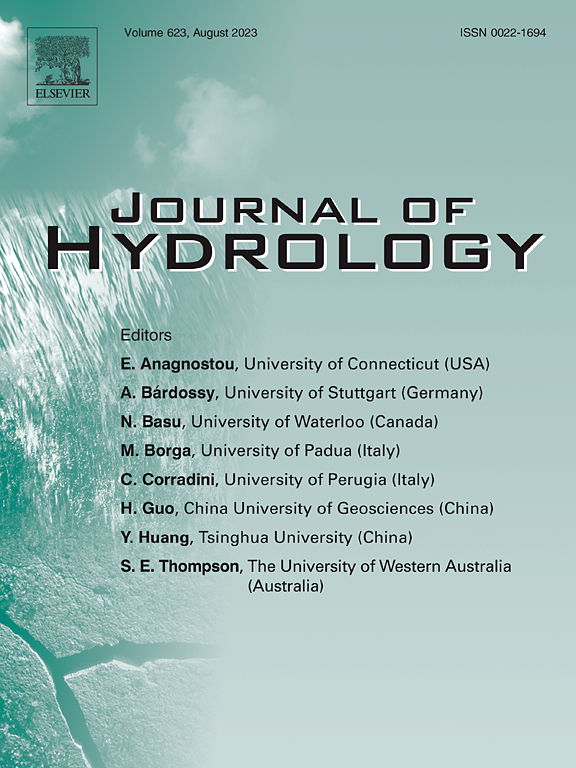A comparative study of physics-informed neural network strategies for modeling water and nitrogen transport in unsaturated soils
IF 6.3
1区 地球科学
Q1 ENGINEERING, CIVIL
引用次数: 0
Abstract
A deep understanding of subsurface flow dynamics—including water infiltration and the transport of single or multiple solutes in unsaturated soils—is critical for a wide range of engineering applications. Traditionally, these complex processes have been modeled using standard numerical solvers, which remain conventional in many studies. However, a recent and promising methodology gaining traction is physics-informed neural networks (PINNs). This approach is based on training neural networks to solve partial differential equations by combining available data with the physical principles embedded in the equations. In this study, we analyze several PINN solvers to tackle the coupled model of water flow and single or multispecies solute transport in unsaturated soils. This model is governed by the highly nonlinear Richards equation and advection–dispersion equations. To improve the training of the solvers, we integrate several strategies aimed at capturing the system’s full complexity.
The numerical experiments cover one- and two-dimensional scenarios, tackling forward and inverse problems. The results obtained from PINN are compared with reference solutions and experimental data sourced from existing literature. Our analysis underscores the effectiveness of employing sequential training alongside an adaptive activation technique for modeling the coupled water–solute system. This methodology not only improves accuracy and training efficiency but also enables an accurate estimation of the unknown ammonium nitrification rate from sparse measurements.
非饱和土壤中水氮运移建模的物理信息神经网络策略比较研究
深入了解地下流动动力学-包括水渗透和非饱和土壤中单个或多个溶质的运输-对于广泛的工程应用至关重要。传统上,这些复杂的过程已经使用标准的数值求解器进行建模,这在许多研究中仍然是传统的。然而,最近有一种很有前途的方法正在获得关注,那就是物理信息神经网络(pinn)。这种方法是基于训练神经网络,通过将可用数据与嵌入方程中的物理原理相结合来求解偏微分方程。在这项研究中,我们分析了几种PINN求解器来解决非饱和土壤中水流和单种或多种溶质迁移的耦合模型。该模型由高度非线性的理查兹方程和平流-色散方程控制。为了改进求解器的训练,我们整合了几种策略,旨在捕获系统的全部复杂性。数值实验涵盖了一维和二维场景,解决了正问题和逆问题。将PINN得到的结果与参考解和来自现有文献的实验数据进行了比较。我们的分析强调了采用顺序训练和自适应激活技术对耦合水-溶质系统建模的有效性。该方法不仅提高了准确性和训练效率,而且能够从稀疏测量中准确估计未知铵硝化速率。
本文章由计算机程序翻译,如有差异,请以英文原文为准。
求助全文
约1分钟内获得全文
求助全文
来源期刊

Journal of Hydrology
地学-地球科学综合
CiteScore
11.00
自引率
12.50%
发文量
1309
审稿时长
7.5 months
期刊介绍:
The Journal of Hydrology publishes original research papers and comprehensive reviews in all the subfields of the hydrological sciences including water based management and policy issues that impact on economics and society. These comprise, but are not limited to the physical, chemical, biogeochemical, stochastic and systems aspects of surface and groundwater hydrology, hydrometeorology and hydrogeology. Relevant topics incorporating the insights and methodologies of disciplines such as climatology, water resource systems, hydraulics, agrohydrology, geomorphology, soil science, instrumentation and remote sensing, civil and environmental engineering are included. Social science perspectives on hydrological problems such as resource and ecological economics, environmental sociology, psychology and behavioural science, management and policy analysis are also invited. Multi-and interdisciplinary analyses of hydrological problems are within scope. The science published in the Journal of Hydrology is relevant to catchment scales rather than exclusively to a local scale or site.
 求助内容:
求助内容: 应助结果提醒方式:
应助结果提醒方式:


